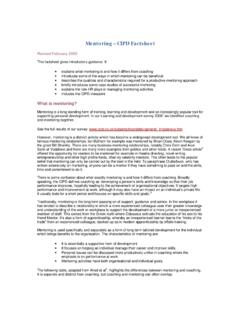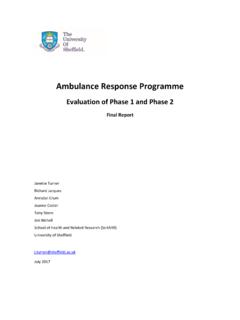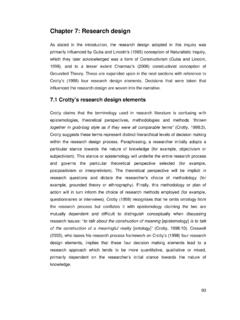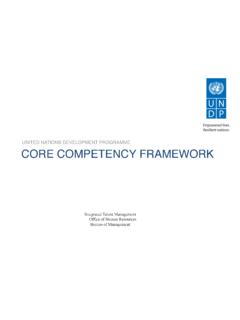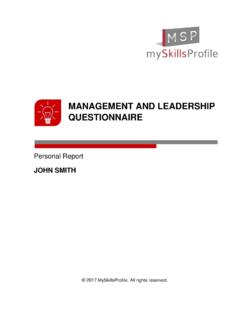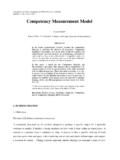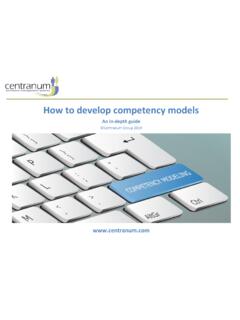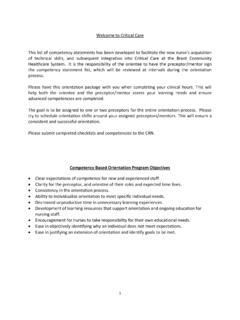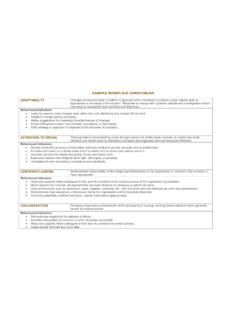Transcription of LOW INTENSITY COGNITIVE BEHAVIOURAL COMPETENCY …
1 Low INTENSITY COGNITIVE BEHAVIOURAL COMPETENCY Scale Manual Assessment 1 October 2015 LOW INTENSITY COGNITIVE BEHAVIOURAL COMPETENCY SCALE MANUAL Assessment Sessions Low INTENSITY COGNITIVE BEHAVIOURAL COMPETENCY Scale Manual Assessment 2 October 2015 INTRODUCTION Low INTENSITY COGNITIVE BEHAVIOURAL interventions are often delivered by Psychological Wellbeing Practitioners (PWP) who provide guided self-help (GSH) in a coaching style to patients with mild- moderate common mental health problems. A crucial aspect of the PWP role is the assessment of patients, aiming to identify the patient s main presenting problem and evaluate the suitability of the specific style of the low INTENSITY clinical method and model of intervention for the patient, their problems and their goals.
2 Assessment competencies are also essential in ensuring the safety of the patient and in the right choice of treatment. ASSESSING FOR BEHAVIOUR CHANGE Consideration of behavior change theory is fundamental to the low INTENSITY COGNITIVE behavioral approach. It is essential the practitioners are able to consider the way in which behavior change underpins the low INTENSITY method and apply this knowledge within the assessment. The integrative model of behavior and behavior change that informs PWP work is the COM-B model (Michie et al., 2014). The model conceptualizes behavior change as resulting from the interaction of three factors (a) capability to perform behavior change (b) the opportunity to carry out necessary behavior change and (c) the motivation for behavior change. During assessment, practitioners should utilize the COM-B model to inform and influence the gathering and synthesis of information to aid clinical decision-making and treatment planning.
3 There are no scales measuring the use of COM-B, but the model should be used to inform the assessment process. The three areas are outlined: CAPABILITY Does the patient have sufficient knowledge or skills to change their behavior/reasoning/executive functioning through understanding of their common mental health problems? OPPORTUNITY What factors in the patient s environment maintain the problem behavior and make behavior change difficult? Does the patient have sufficient access to resources? What barriers to change need to be considered? MOTIVATION What is the patient s current readiness for change? What factors are currently impacting the patient s motivation? Is avoidance currently making change difficult or maintaining the problem? What other factors may play a role in decreasing motivation drugs/alcohol? The COM-B model has been mapped to the PWP assessment tool to highlight areas where it will facilitate the PWP with their assessment of the patient and their presenting problem.
4 The model should be applied such that the 3 factors are considered in relation to their impact on the patient s ability to engage in behavior change, and ultimately to engage in the PWP approach. The model is applied such that it informs PWP treatment planning, informs treatment goals and enables the PWP to anticipate challenges in behavior change. Low INTENSITY COGNITIVE BEHAVIOURAL COMPETENCY Scale Manual Assessment 3 October 2015 LOW INTENSITY COGNITIVE BEHAVIOURAL COMPETENCY SCALE MANUAL This scale is used to measure the level of COMPETENCY in practitioners delivering low INTENSITY COGNITIVE BEHAVIOURAL assessment sessions. The scale does not measure adherence to the PWP assessment approach ( whether something was done), but rather the COMPETENCY with which the PWP completed the assessment ( the skillfulness of the assessment and the methods used).
5 The scale contains 6 items to enable raters to examine a range of key competencies: - Introduction to the assessment session - Engagement competencies - Interpersonal competencies - Information gathering competencies: problem focused - Information giving competencies: suitable to the problem - Shared planning and decision making competencies The low INTENSITY COGNITIVE behavioral COMPETENCY measure is a rating scale to be used by supervisors, trainers and managers to assess practitioner s performance in assessment sessions. The examples included within the manual are considered as guidelines. The examples provide both descriptive and explanatory examples for reference. As practice is complex, then raters need to be able to use the manual as guidance to ratings, as exhaustive descriptors cannot be provided. The scale and manual is suitable for use in benchmarking the competencies of both trainee and qualified PWPs.
6 Low INTENSITY COGNITIVE BEHAVIOURAL COMPETENCY Scale Manual Assessment 4 October 2015 SCORING The low INTENSITY COGNITIVE behavioral assessment COMPETENCY scale scoring system uses the Dreyfus system (1990), whereby competencies are rated on a Likert scale (0-6). Each level has been defined in detail to conform to the levels of competence. This has been set out in the table below. For a low INTENSITY practitioner to be graded as competent in an assessment session, the session has to score 18 overall (range 0-36). The PWP must score 3 or more on the summary rating in each of the six sections - half-point scoring is accepted. The summary rating of each section is NOT the average of the ratings given on specific aspects and is not cumulative. The COMPETENCY -rating tool is designed to be appropriate for assessment sessions lasting 30-45 minutes.
7 Raters are encouraged to use the whole scale during COMPETENCY assessment. A 6 is often characterized by the application of competencies in the face of patient difficulties. It is possible to score a 6 in the absence of patient difficulties should the rater feel this provides the most accurate rating of the practitioners competence. Low INTENSITY COGNITIVE BEHAVIOURAL COMPETENCY Scale Manual Assessment 5 October 2015 COMPETENCY Rating Criteria Introduction to Assessment Session The low INTENSITY COGNITIVE behavioral practitioner or PWP should demonstrate competence in introducing themselves and clarifying their role, as well as providing information on the process and features of the assessment this should be fluently and confidently presented. The practitioner should ensure that the patient understands what to expect will occur in the initial assessment appointment.
8 The key features of the introduction to assessment item as outlined in the low INTENSITY COGNITIVE behavioral COMPETENCY scale are as follows: Key features: - PWP s introduce themselves and gain the patient s full name and preferred name - Role clarification - Outline confidentiality and its boundaries - Describing the purpose of the assessment session and what methods will be used - Defining a time scale for the assessment session At the start of the assessment session the practitioner should introduce their name and their role. This should be welcoming and clear. Confidentiality should be described fully. The patient should be informed that information discussed in session will not be shared with anyone beyond the Primary Care team, in terms of record keeping and supervision. In terms of risk concerns then the practitioner should inform the patient about who they would share information with in such circumstances that there is concern about the level of risk posed to the patient or others.
9 Confidentiality should be agreed with the patient. The practitioner should explain the purpose of the assessment is to develop a shared understanding of the problems to inform appropriate treatment or signposting. The assessment methods should be explained to the patient for example; defining exactly what the problem is, completing outcome measures and discussing appropriate treatment options. A time scale should be defined and then the session adhere to this time scale. Checklist- Has the practitioner stated their name and asked for the client s full name? Have they clarified their job title and given a description of their role? Did the practitioner appear confident in their introductions, so putting the patient at ease? Has the practitioner outlined how the sessions will be set out ( the methods used)? Did the practitioner explain and agree confidentiality and boundaries ( information discussed with supervisor, GP, risk assessment)?
10 Was there a time scale for the assessment session clarified? Did the practitioner check understanding of all the above when and if necessary? Low INTENSITY COGNITIVE BEHAVIOURAL COMPETENCY Scale Manual Assessment 6 October 2015 Introduction to Assessment Session COMPETENCY ratings: No introduction provided. Inappropriate introduction provided, key information omitted fails to explain role, does not outline confidentiality or the purpose the of session. Introduction provided but numerous problems evident and important information missing states name and role but does not elaborate on what the role is, description of confidentiality is vague and unclear, does not describe the purpose or process of the session. Fails to elicit patient preferred name. Introduction present, key information provided with basic detail on confidentiality provided, aims of session outlined briefly.

